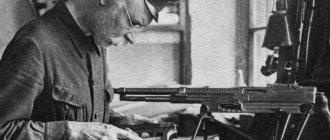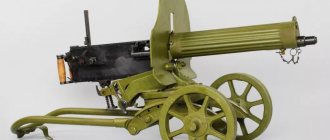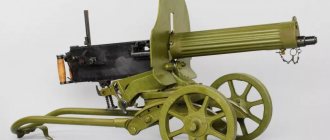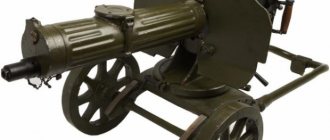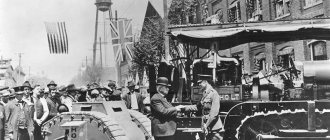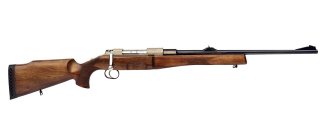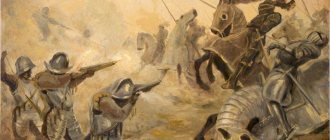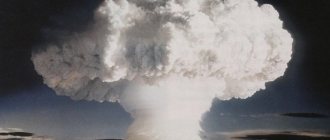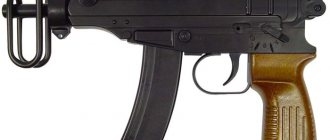Technical and tactical characteristics
The 1910/1930 model machine gun met the Great Patriotic War as part of the Red Army. Attempts to replace it with similar weapons of the Degtyarev system failed, and the Maxim machine gun, the characteristics of which became obsolete in the early 40s, began to be produced in large quantities again. The production of new machine guns of the Maxim system was finally stopped in 1945.
| Caliber | 7.62 mm |
| Weight in firing position | 66 kg |
| Machine gun body weight | 20.3 kg |
| Belt weight with 250 rounds | 10.3 kg |
| Initial bullet speed | 800 m/s |
| Rate of fire | 600 rpm |
| Combat rate of fire | 250-300 rpm |
| Sighting range | 3000 m |
| Bullet range | 5000 m |
In different countries of Europe, several varieties of heavy machine guns of the Maxim system were designed and produced: the English Vickers, the German MG-08 and MG-11, etc. Some of them were used as manual ones, there were also large-caliber versions, they were installed on ships and aircraft.
The design of the Maxim machine gun
Let's look at how Hiram Maxim's machine gun works.
Main design elements
Generally speaking, Maxim’s heavy machine gun consisted of the following elements:
- Fuse;
- Sighting device;
- Locking mechanism;
- Filler and drain plug;
- casing;
- Steam removal system;
- Sleeve ejector;
- Trunk;
- Return spring;
- Trigger;
- Control handles.
Weapon drawings
Operating principle of a machine gun
The shooting mechanics are automatic. This principle is based on the recoil of the bolt and barrel of a machine gun under the influence of powder gases. When the elements move a certain distance, they disengage and continue to move independently of each other.
The weapon works as follows:
- The tape is fed into the receiver;
- The handle twitches, as a result the tape moves forward, and the cartridge ends up opposite the lock;
- The handle is distorted again, as a result of which the cartridge is captured by the lock and sent into the barrel;
- To shoot, you need to press the trigger, when the loaded cartridge flies out, the lock is pulled back under the influence of powder gases, the handle moves forward;
- The spent cartridge case, together with the new cartridge, goes down, the ammunition is sent into the barrel, and the cartridge case is ejected through a special tube.
Improvements and upgrades
The first models of the machine gun had parts made of expensive non-ferrous metals and required a lot of labor and highly qualified gunsmiths. Therefore, one Maxim machine gun, the design of which was very difficult to manufacture, cost as much as a small locomotive. Subsequently, brass and bronze were replaced by steel, Tula gunsmiths found ways to avoid individual fitting of each part, but the machine gun was always a rather expensive product.
Even after numerous upgrades, the machine gun could not avoid significant shortcomings. The water cooling system of the barrel in the form of a characteristic casing made it possible to conduct automatic fire in long bursts without any visible consequences for the weapon. But the need to have a constant supply of water made it difficult to use weapons in combat. Often the casing was damaged even by bullets, especially by fragments of mines and grenades.
The armored shield, together with the water-filled casing and the massive machine, determined the heavy weight of the Maxim, reaching up to 70 kg. In marching formation, the machine gun was carried disassembled by three soldiers, and boxes with ribbons were distributed throughout the company. The high position of the shield made camouflage difficult, which forced them to frequently change position, so the machine gunners often removed the protection.
The cartridge strip was made of either fabric or metal. The fabric tape contaminated the machine gun and quickly became unusable.
But the high combat effectiveness of the machine gun justified the widespread use of Maxim’s invention.
The principle of operation of a machine gun
The key to success was the idea of using recoil momentum, which made the machine gun a key weapon in the wars of the 20th century. Weapon automation is based on the use of recoil with a short barrel stroke. During the shot, the barrel is pushed back by powder gases, interacting with the loading mechanism: it removes the cartridge from the belt, directs it into the breech, and at the same time cocks the firing pin.
This entire design provided a rate of fire of about 600 rounds per minute (varies depending on the caliber used), but also required constant cooling of the barrel.
Soviet authorities deceived re-emigrants from Harbin
The undisputed palm in the number of Russians in Asia was captured by Chinese Harbin. An impressive diaspora existed here at the beginning of the 20th century. After the revolutions and the Civil War, at least 100-200 thousand participants of the White movement settled in the city and its surroundings - military personnel, intellectuals, members of government bodies of the regime of Alexander Kolchak and other civil servants. It was in Harbin that the Russian Fascist Party was formed.
In the 1930s, many Russian Harbin residents agreed to the USSR's offer to return home, and as a result were subjected to repression. Due to the Japanese occupation, some Russians settled in other cities - they went to Shanghai, Beijing, Qingdao, but there were also those who hoped for the patronage of militaristic Tokyo, resisting the influence of the Chinese and Soviet authorities. By 1939, approximately 50 thousand Russian emigrants and their descendants could remain on the territory of Harbin.
Machine gun "Maxim": device, history of creation and technical characteristics
In the history of weapons there are examples that have become iconic. The American Colt equalized the rights of the strong and the physically weak. The Shpagin submachine gun (PPSh) is the weapon of a soldier of Victory. The Kalashnikov assault rifle has participated in all military conflicts on the planet since the mid-20th century. The TT pistol is the weapon of killers and bandits of the dashing nineties.
From this series, a participant in two world wars and the civil war in Russia is the Maxim machine gun, which changed the tactics of war, a “killing machine” and a “hellish mower”.
Post-war machine guns
After the war, the creation of machine guns took two paths. The Soviet Union, based on the advanced experience of Germany, which invented the “Kurz” cartridge, created a light machine gun chambered for a similar (intermediate) cartridge. Thanks to him, the RPD with a belt in a box for 100 rounds was 4 kg lighter than its predecessor DP with a disc for 46 rounds. With such a weapon, it became much easier for the machine gunner to run next to the soldiers and support their attack with machine gun fire. For such direct escort and fire at short distances, the power of the intermediate cartridge was quite enough. For more serious “work” at long distances, our army had the Goryunov SG-43 heavy machine gun, which fired old and very powerful rifle cartridges. In 1961, it was replaced by the Kalashnikov universal machine gun (PK), firing the same rifle cartridges. But thanks to the box with tape attached to the machine gun, the PC can also be used as a manual one.
The “manual, infantry, Degtyarev” handsome RPD was not in service with our army for long, but it was widely distributed around the world, where it was produced in countless quantities
The RPK appeared in 1961. It was lighter than the RPD and, with the same length, had a longer barrel and, as a result, better accuracy. There were 75 rounds in the round disk, and 40 in the “horn”
Kalashnikov machine gun
In NATO, in the old fashioned way, there was only one cartridge left for both machine guns and automatic rifles. It is weaker than the Russian rifle cartridge, but more powerful than the intermediate one.
In practice, NATO 7.62 mm machine guns are weaker than the Soviet PK, but all of their rifles are stronger not only than the Kalashnikov assault rifle, but also the RPD and RPK light machine guns. True, after the defeats in Vietnam, the Americans (and then the entire NATO) themselves abandoned such “superiority”. Now in their armies, like ours, they have two different cartridges. For the M 60, M G3, M 52, NK 21 and MAG universal machine guns, the 7.62 mm cartridge remained, and for rifles and light machine guns an intermediate 5.56 mm caliber cartridge was introduced.
The famous German MG 34 was a very expensive and difficult to manufacture machine gun. In 1942, to replace it, engineer Grunov created a simpler MG 42. After the war, under the name MG 3, it was adopted by the German army (Bundeswehr) and 13 other countries around the world
The German NK 21 is successful in the same countries where its G 3 rifle is in service
The Belgian MAG machine gun, possessing “magical” reliability, serves in the army of Great Britain and 75 other countries
Called a universal machine gun, the M 60 has so many disadvantages that in addition to it, the Americans also armed themselves with the Belgian MAG machine gun
Share link
Review article on the Maxim machine gun mod. 1910/30.
Review of the quadruple machine gun Maxim ZPU 4MO Review of the Maxim-Tokarev machine gun Photo selection-1: “Use of the Maxim machine gun in Ukraine (Donbass).” Use of the Maxim machine gun in Ukraine (Donbass).” Photo selection-2: “Spare parts for the Maxim machine gun.” Spare parts for the Maxim machine gun.” Photo selection-3: “Soldiers with a Maxim machine gun.”Soldiers with a Maxim machine gun.” Photo selection-4: “Maxim machine gun on Sokolov’s machine gun.”
To avoid misunderstandings regarding the name and country of origin, we will answer these questions immediately. The machine gun was invented by the English gunsmith Hiram Stevens Maxim, that is, the name came not from the name of the inventor, but from his surname. It should sound more correct as MAXIM with the emphasis on the first syllable. And he already received the name Maxim in the Russian manner and began to be called by a simple Russian name. The Maxim machine gun can be partially called Russian, for its recognition by its armored shield and trolley machine, which we often see in films and museums. An armored shield with a trolley originally appeared in Tsarist Russia, and machine guns for the 7.62 mm caliber were also created for the Russian Empire. For this reason, we sometimes believe that the Maxim machine gun is a Russian weapon. The history of the machine gun began in 1873, when the American Hiram Stevens Maxim first created a fully automatic weapon. The automatics of the new weapon had a belt feed, and the automatics worked due to the recoil of the barrel when firing. The 6-barreled Gatling gun immediately comes to mind, but it cannot be called the first automatic weapon, since it required rotating the handle for the mechanics of the machine gun to work. Harem Stevens Maxim did not specialize in purely military inventions (he also invented a mousetrap), which is why it took 10 years for the drawings on paper to turn into the first working deadly machine, spitting deadly lead. In 1883, Maxim demonstrated his creation to the American military, but they were not impressed, since the high consumption of cartridges in a short time is a disadvantage, not a plus, “you can’t get enough cartridges.” Maxim emigrated to England, where he offered his creation to the English military for the army, but also did not receive interest from the military. The production of the machine gun took place thanks to the financial support of banker Nathaniel Rothschild, who undertook to invest capital in a project to create an arms company that produced and advertised the new machine gun. Harem Stevens Maxim himself traveled around the countries and presented his machine gun to monarchs and senior military officials from different countries of the world. During the presentation, he packed the machine gun in a box and put it in water for two days, and two days later he opened it and emptied the machine gun belt without first cleaning the machine gun. Also, a myth was started among people that the Maxim machine gun fires 666 rounds per minute, which gave it the nickname “Death Machine”.
Hiram Stevens Maxim
The machine gun was presented in Russia in 1887. The presented machine gun was a 45 caliber 11.43 mm. At that time, the Russian Empire ordered a small order for field testing chambered for the 10.67 mm Berdana rifle cartridge. After the tests, the military showed interest in the new weapon, but it was decided to convert the 45 caliber 11.43 to the 30 caliber 7.62 mm, since this caliber of cartridge for the Mosin rifle is common in the Russian army. In 1891-1892, 5 machine guns chambered for the Mosin rifle 7.62x54 mm were manufactured for testing. The first 291 machine guns for the Russian army were supplied from 1887 to 1904. The sale and delivery of the first machine guns to Russia was carried out by the Vickers, Sons & Maxim company. The first machine guns had an impressive weight of 244 years, since they had a gun carriage (well, not 400 kg, like the first samples). It was assumed that Maxim machine guns would be used for the defense of fortresses and maneuverability in this case, the requirement for the weight of the machine gun was not the main requirement. Therefore, the machine gun was transferred to the artillery department. In 1904, Russia independently began to produce a machine gun at an arms factory under a license purchased from the British. The machine gun had its first “baptism of fire” during the Russo-Japanese War of 1904-1905, where it showed its extraordinary fire efficiency. During the war, soldiers removed machine guns from carriages and mounted them on tripods to reduce weight and make the machine gun more mobile. So the cost of a machine gun produced in Tula was 942 rubles plus 80 pounds sterling for the right to produce a machine gun. In total, a machine gun produced under license cost the treasury 1,700 rubles, despite the fact that the British sold them for 2,288 rubles per unit.
The first Maxim machine guns on cannon carriages
In 1910, gunsmiths I.A. Sudakov, P.P. Tretyakov, I.A. Pastukhov. The Tula Arms Plant carried out the first modernization of the Maxim machine gun. The weight was reduced, some parts began to be made of steel rather than bronze, the receiver chambered for 7.62x54 mm cartridge was changed. The machine gun received a compact trolley-machine with a Sokolov shield A.A. and began to weigh 70 kg with water in the casing to cool the barrel, dry weight 62.66 kg. Sokolov also designed boxes for carrying cartridges and sealed cylinders for boxes with cartridges. The modernized machine gun was actively used during the First World War and during the Civil War. So during the First World War (and not during the Civil War by the Makhnovists) horse-drawn carts with a Maxim machine gun in the rear of the cart appeared. The Russian Army had 4,157 machine guns. At the beginning of WWI, the Military Ministry ordered an increase in the production of machine guns at the Tula Arms Plant, but there were still not enough machine guns for the needs of the army. During WWI, 27,571 machine guns were manufactured. In 1914 - 828 sh., 1915 - 4,251 pcs., in 1916 - 11,072 pcs., 1917-11,420 pcs. The machine gun began to be installed on armored cars, armored trains, tanks, and airplanes. The machine gun was not popular on airplanes due to its heavy weight.
Based on the Maxim machine gun in 1924, gunsmith N.F. Tokarev created the Maxim-Tokarev light machine gun. The new machine gun weighed only 12.5 kg; instead of water cooling, it received an air-cooled casing. The machine gun also received a butt with a rifle handle for firing and a bipod. In just one year, 2,500 machine guns were produced, but they did not gain much popularity compared to their brother. The second reason for the unpopularity of Maxim-Tokarev was most likely the appearance of the DP-27 light machine gun. Also on the basis of Maxim in 1926, the PV-1 (air-based machine gun) was created for aircraft, but was replaced by ShKAS. In 1928, the machine gun was placed on a tripod and given the function of an anti-aircraft machine gun to combat aviation, which was too much for the machine gun. And in 1931, gunsmith N.F. Tokarev created a full-fledged anti-aircraft machine gun ZPU M-4. Tokarev combined 4 Maxim machine guns on one machine. ZPU M-4 was installed on ships, trains, and cars. The machine gun was also successfully used against enemy personnel.
An installation of 4 machine guns was successfully used against enemy aircraft during the Great Patriotic War. In 1930, the machine gun was once again modernized. Tronenkov A.A., Tretyakov P.P., Pastukhov I.A., Rudnev K.N. worked on the modernization. During the modernization, the following changes were made: - the barrel casing began to be made with longitudinal ribbing to increase rigidity - for long-distance shooting, a 2x optical sight and a quadrant protractor were installed - a return spring tension indicator appeared - a buffer appeared for attaching the shield to the machine gun casing -changed sight for firing light and heavy bullets The first attempt to replace the Maxim heavy machine gun with a new machine gun was in 1939, when the Degtyarev DS-39 heavy machine gun began to enter the army. For this reason, the production of the machine gun was curtailed. But the new machine gun turned out to be capricious and unreliable, and production of the Maxim machine gun was resumed again in June 1941 at the Tula Arms Plant. During the war in 1943, the Maxim machine gun was replaced by the Goryunov SG-43 heavy machine gun. The machine gun also used a 7.62 rifle cartridge and weighed 27.7 kg on a tripod. But with the advent of the SG-43, Maxim continued to be produced until 1945, until the very end of the Second World War. In 1939, a Vladimirov machine began to be manufactured for the machine gun, which replaced the U-shaped support with a three-legged structure, which made it possible to install the machine gun for firing from a standing position at ground and air targets (a photo of the Sokolov and Vladimirov machine can be found at the end of the article). After 1940, Maxim began producing Soviet machine guns with a wide neck on the barrel casing, which made it easier to fill with water, as well as fill with snow or crushed ice. The idea was taken from the Finnish Maxim M-32/33 machine gun. Since 1932, the machine gun began to be produced with a bracket for a 2x optical sight. The Maxim machine gun of 1910/30 was supplied to troops under the designation GAU-56-P-421. Machine gun design. The machine gun had a water-cooled barrel. The finned barrel casing held 4 liters of water. The presence of water ensured greater survivability of the machine gun, since it was possible to fire intensely from the machine gun without fear of the barrel jamming from overheating. Water cooling also had disadvantages. This increased the weight of the machine gun, and at subzero temperatures it was impossible to leave water in the machine gun casing, which, having turned into ice, could tear the machine gun casing and immobilize the automation, since the barrel became motionless from the ice. The antifreeze cooling fluid used was 50% water, plus 50% glycerin and 0.1% sodium hydroxide. This “anti-freeze” did not freeze down to minus 50 degrees. The automatic barrel provided 600 rounds per minute. The machine gun barrel was semi-movable with a muzzle accelerator. The muzzle accelerator, unlike the muzzle brake, on the contrary, increased the recoil force on the machine gun barrel, which ensured more reliable operation of the automation. Due to the recoil, the barrel rolled back, pushing the reloading mechanism. The machine gun was fed with canvas belts, and later with metal and not scattered belts. The cartridge feeder was of a slider type. The cartridge was captured from the belt by an up-and-down moving block, which then fed the cartridge into the chamber and removed the cartridge case. The cartridges were pushed forward of the machine gun, which ensured that the tank’s fighting compartment was not cluttered, the bunker was not filled with spent cartridges, and the shooter’s space was not filled with powder gases. The return-mainspring was located on the left side of the machine gun. The machine gun's folding sight made it possible to fire at a distance of up to !!!!! meters with light and heavy bullets. To protect the shooter, an armored shield weighing 11 kg was installed on the machine gun, which, according to some data, would be capable of protecting the shooter from 7.62 mm bullets. Often shooters used a machine gun without an armored shield to reduce weight. The absence of a shield reduced the silhouette of the machine gun and made the machine gun crew a less visible target for the enemy. The author of the article does not agree with this version, since the shield was removed to give maneuverability during the offensive, and when firing from a position, the shield does not significantly visually reveal the position of the machine gun. In addition to the shield, the position was revealed by the sound and flame from the machine gun barrel, so the absence of the shield, on the contrary, had a negative effect, since the combat crew increased their chances of being killed by shrapnel and enemy bullets without the protection of the armored shield. The Soviet-made machine gun was actively used in Vietnam; in the USSR, the last mention of its use was during the military conflict with China on Damansky Island in 1969. In modern history, its use was recorded during military operations in Eastern Ukraine on both sides of the conflict. According to some reports, a large number of mothballed Maxim machine guns remain in military warehouses. This is how, 110 years later, the history of the machine gun continues.
Automation of the Maxim machine gun
TTX of the Maxim machine gun mod. 1910/30
| Number of shots | 200/250 in tape |
| Barrel diameter | 7.62x54 mm, 4 grooves |
| Combat rate of fire | 250-300 rounds per minute |
| Maximum rate of fire | 600-700 rounds per minute |
| Sighting range | 2300 meters |
| Effective sighting range | 600 meters |
| Maximum firing range | 3800 meters |
| Initial departure speed | 855 m/s |
| Automation | short shutter stroke, crank |
| Weight | 28.2 kg empty, 64.3 kg on a wheeled machine, boxes with tape for 200/250 cartridges 8/9.4 kg |
| Dimensions | 1107 mm |
Short service and controversial resignation
Tests of both options took place in April 1925. In addition to Budyonny’s commission, representatives of the command of the Red Army, ground forces, air force and even the navy also took part in them. As a result, the overwhelming majority of votes (57 against) were given for the Tokarev sample. Initially, the commission decided to also conduct military tests, transferring the existing Kolesnikov and Tokarev samples to the troops of the Moscow, Western and Ukrainian districts. But the “handbrake” was needed so urgently that already 26 May, without waiting for the results of military tests, the MT (Maxima-Tokarev) machine gun was officially adopted by the Red Army.
In addition to Budyonny’s commission, representatives of the command of the Red Army, ground forces, air force and even the navy also took part in them. As a result, the overwhelming majority of votes (57 against) were given for the Tokarev sample. Initially, the commission decided to also conduct military tests, transferring the existing Kolesnikov and Tokarev samples to the troops of the Moscow, Western and Ukrainian districts. But the “handbrake” was needed so urgently that already 26 May, without waiting for the results of military tests, the MT (Maxima-Tokarev) machine gun was officially adopted by the Red Army.
Red Army soldiers during exercises with Maxim-Tokarev machine guns
However, “accept” and “produce” in the conditions of the USSR in the 20s of the last century were very different things. During the first year of production, from June 1925 to June 1926, the Tula plant produced only 50 MT machine guns. In addition to the problems with the development of a machine gun, although based on the already known Maxim, but still partially new in design, comments about problems and demands for their elimination began to appear from the troops like mushrooms after rain.
The haste to adopt the MT into service, without undergoing full-fledged field tests, not to mention obtaining military results, has now come back to haunt us in full - the necessary changes had to be made directly during production. This, as expected, did not have the best effect on its pace and quality of products. The experience gained was very painful and is reflected in the relevant documents:
Spanish Civil War: Republicans with an MT machine gun during street battles
However, the main threat to MT was not the problems that were gradually being eliminated, but competitors. Since the weight of 13 kilograms was reasonably considered too large for a handbrake, it was decided to continue work on a new light machine gun, designed by Degtyarev “from scratch”, without any connection with the Maxim. The opinion on the need to reduce the weight of the handbrake was expressed, in particular, by A.A. Blagonravov:
Tokarev, in the process of finalizing the MT, was forced to harness “a horse and a trembling doe” to one cart. The “Model No. 2” he presented in 1926, although it was noticeably better than the first version, had even less in common with the original “Maxim” - that is, significant changes in equipment were required for production. On the other hand, the preserved “Maksimov” barrel locking system and the part of the design associated with it still led to the fact that the machine gun turned out to be complex and heavy. As a result, after successful testing of the Degtyarev model - the future DP light machine gun - production of the MT was discontinued.
Spanish reenactors depicting Republican machine gunners, 2014
The total number produced was approximately 2,500 copies. As the DP was received, these machine guns were removed from the troops and sent to warehouses, but they did not have to remain there for long. In 1938, the Maxim-Tokarev machine gun, among other weapons, began to be sent to the Spanish Republic. A certain amount of MT in the late 30s also went to China as part of the “Soviet Lend-Lease” - either to the communists or to the Kuomintang.
In the weapons literature, the Maxim-Tokarev machine gun, as a rule, is usually not rated very highly - they say, it was, was produced, turned out to be too heavy and unreliable, and therefore lost to the DP. It is quite difficult to argue about the second claim - exact data about this “unreliability”, as a rule, is not provided, and the author has not yet been able to find it. It can also be noted that the DP also did not demonstrate 100% reliability in the first tests, and subsequently, especially during the Great Patriotic War, a number of claims were made against it.
Maxim-Tokarev machine gun from the collection of the Museum of Russian Military History in Padikovo
As for the weight, already in the next decade “one large European country” adopted a belt-fed machine gun, which weighed more than 12 kilograms in its manual version. This did not in any way prevent the MG 34 from becoming one of the best machine guns of World War II and the ancestor of the class of single machine guns.
Interestingly, it was planned to develop a light machine for Maxim-Tokarev, provided that it remained in service with machine gun platoons. It is quite possible that if the decision on the fate of this machine gun had not been so radical, by the early 30s the USSR could have received its own prototype of a single machine gun. But it didn’t work out.
Machine. The biggest mystery
0
Vickers model 1904, right: infantry wheeled carriage
0
After the Russo-Japanese War, the following view on the use of machine guns was established: the machine gun is a powerful weapon of fire, necessary for both infantry and cavalry; a machine gun is necessary both during defense and during an offensive, and therefore the design and size of machine guns and installations should allow them to accompany troops everywhere, allow covert movement, and quick installation in position. To this good and reasonable were added additional “wants” of the GAU field generals, such as: a shield (similar to the three-inch shields introduced at the same time) and wheels, so that the machine gun could be rolled along the parade ground and alleys of the Summer Garden in the face of His Majesty the Autocrat of All Russia. Although in the report of General Kuropatkin on the results of the Russo-Japanese War it was written unequivocally about the advantages of tripod machines (although what kind of decent person would read the notes of this loser).
0
The Vickers tripod model 1910 again offered a tripod machine model. 1904, however, modifying it with a new lifting mechanism. But the GAU rejected it, saying: “Where is the shield and wheels?” And under the slogan “the customer is always right!” a tripod machine with wheels and a shield was presented, called the “Vickers tripod arr. 1910", adopted for service, but used rather limitedly. Because the shield and wheels added a lot of weight, essentially killing the advantages of the tripod machine.
0
Sled machine. Top row: on the left - MG.08 on a machine for sitting shooting, on the right - MG.08 with a removable casing protection and a mini machine. Bottom row: on the left - shooting from a trench, on the right - running in an attack with a stretcher - a sled (only 2 people are needed to participate. In 1907, the clerk of the Main Artillery Directorate, Captain A. A. Sokolov, took on the development of a new machine for the Maxim machine gun with the participation of the master of the St. Petersburg gun factory Platonov.Sokolov managed to mix and match in one.
0
Tripod machine. Top row, from left to right: Vickers Mk.I on a tripod machine, carrying the assembled machine gun to the battlefield (3 people required), crawling onto the battlefield (machine gun separated from the machine gun). Bottom row, from left to right: techniques for firing a machine gun on a tripod machine - lying down, sitting, from a trench.
0
Parapet machine. On the left is a parapet machine (l'affût de rempart) for a Gardner machine gun, on the right is a Maxim machine gun model 1899 on a fortress “breastwork” machine gun. The main features of the “sled” (allowing crawling, shooting from a prone position, camouflage in low vegetation and carrying over rough terrain in battle by two crew numbers), parapet (the ability to roll on a flat surface inside fortresses and fire from the parapet of field shelters with the trunk folded ) and tripod (stability, ability to fire in a sitting and lying position) machines. The shield also came into place, protecting the shooter from the frontal impact of enemy machine guns in fortresses and shelters, although it created significant problems with camouflage. At the same time, the shield did not protect the second crew number and greatly limited the shooter’s view of the battlefield. True, the weight of the machine turned out to be “beyond good and evil,” to put it mildly. But it’s okay, the GAU generals thought, the Russian hero soldiers can do anything.
0
Sokolov’s machine, initial version Based on the test results, it was decided to adopt a machine designed by Sokolov (in other words, a machine model 1908), as it showed the best results on the parade grounds and paths of the Summer Garden. From that moment on, the Russian machine gun train turned off the main highway and went on its own to where there were many paths with laid paving stones and no fields dug up by artillery. And Captain Sokolov very soon became a guard colonel, a laureate of the Nobel Small Mikhailov Prize for outstanding services to the Fatherland and a permanent member of the weapons and technical department of the State Agrarian University. Well done! And then the Great War began. During which, to simplify production, Sokolov’s machine lost its folding front legs, thanks to which it could represent a tripod and sled machine. Moving on wheels didn’t work out very well either. It turned out that when rolling over significant distances, the wheel fastenings become loose, and as a result, shooting accuracy decreases. This was even confirmed in official documents. And Sokolov’s machine, called infantry, became simply a parapet machine for the Maxim machine gun.
0
0
Ideal use of a machine gun on the Sokolov machine By 1915, the Russian Empire was faced not only with a shell famine, which almost everyone had heard of, but also with a weapons famine. Purchases of rifles, machine guns and guns began from everyone who could sell them, and fussy preparations began for the construction of new weapons and cartridge factories. In this wave of shortages of everything, the “Maxim” machine gun was replaced by a wheeled machine gun of the Kolesnikov system, which was easier to manufacture and lighter. The design of the machine used, instead of a trunk, a tubular boom with an opener and rope loops instead of handles, 305 mm oak wheels with steel tires and hubs and bronze bushings, a shield mount and the most simplified horizontal and vertical guidance mechanisms taken by the designer from his anti-aircraft tripod. The disadvantage of the design was that the axis of the barrel bore was too high relative to the axes of the wheel travel and the vertical guidance mechanism. This increased dispersion during shooting. The GAU did not like the machine, especially, as they recall, Guard Colonel A. A. Sokolov was against it, since the machine did not ensure that the aiming line was maintained properly. But the time was such that I had to agree reluctantly. This machine was produced by the Petrograd Gun Factory, Kiev, Bryansk and Petrograd Arsenals. The Izhevsk and Sormovo factories were engaged in the production of shields. But they produced only a few Kolesnikov machines - almost 3,000 pieces. And after the war they suddenly forgot about him.
0
Machine gun "Maxim" on the Kolesnikov machine mod. 1916 Following the results of the first big war, all countries experienced the advantages of tripod machines and the uselessness of shields. Most users realized that a machine gun on the battlefield is not a continuation of artillery, but an independent class of infantry support weapon, and slowly began to switch to simplified and lightweight machines. And also everyone began to think about air-cooled machine guns. In the USSR, replacing the Maxim machine gun machine with a lighter one was not discussed at the official level. On the one hand, TOZ did not deal with machine tools, on the other hand, Artkom was doing well anyway. And behind-the-scenes discussions led to an unexpected result - on June 13, 1928, the headquarters of the Red Army gave the task of designing a new heavy machine gun that would retain the combat effectiveness of the Maxim, but meet modern requirements for weight and cooling system. In the wake of the euphoria from the appearance of the DP light machine gun and the launch of the first tests (failed, however, miserably) in 1930 of a prototype of the Degtyarev heavy machine gun on a tripod, both TOZ and Artkom really hoped in 1931–1933 to get a new machine gun and remove it from production and the Sokolov machine gun, and the Maxim machine gun for the infantry, and decided to sit straight and not fuss. But no one wanted to think that there might be a delay in replacement for another few years, and all this time the heavy and expensive Sokolov machine would be produced.
0
0
Machine gun "Maxim" on the machine Vladimirov mod. 1931 Of course, in 1930, Vladimirov’s universal wheeled tripod machine appeared, which was a reincarnation of Sokolov’s machine with the ability to fire at air targets. However, the weight was almost the same, non-carrying, and the price was appropriate. It was produced in very limited quantities and, in general, did not take root among the troops.
0
So the Red Army soldiers had to run around with the prehistoric artifact until 1945. So there are no mysteries, just bad management, laziness and blind faith that under slogans weapons appear very, very quickly. As for the new machine gun, that’s another story, but still the same... The world’s first mass-produced belt-fed weapon was the Hiram Maxim system machine gun. The belt for the Maxim machine gun was extremely simple in design and, in fact, was an elongated version of the simplest cartridge belt. Two long strips of canvas tape were sewn together with transverse stitches so that through transverse pockets-loops for cartridges were formed in the resulting tape, located at equal intervals. Belts for the Maxim machine gun held from 100 to 500 rounds and even more. To more reliably ensure the positioning of cartridges in the belt, Maxim added transverse brass strips to its design, riveted between the pockets for cartridges. These plates significantly strengthened the canvas tape, but increased its pitch, which somewhat worsened the operating conditions of the feed mechanism. In the Maxim machine gun belt, some of the fastening plates of the tape were longer than others. They showed the positions of the tops of the bullets when the belt was properly loaded, making it easier to load it and align the cartridges in the belt using a special leveler. At the ends the tape had metal tips (shanks) for ease of loading it into a machine gun.
0
Canadian requirements
Of course, the point of view of the Canadian authorities on this incident differed from the official version of the USSR. On April 2, 1981, after tense diplomatic correspondence and bickering at the UN, the parties adopted the document “Settlement of Claim between Canada and the Union of Soviet Socialist Republics for Damage” Caused by "Cosmos 954"). Deputy Minister of Foreign Affairs of the USSR Nikita Ryzhov and Canadian Ambassador Geoffrey Pearson put their signatures on it.
This document, which was signed in Moscow, states the USSR's readiness to pay compensation in the amount of 3 million Canadian dollars for the damage caused, while the injured party demanded 6 million 41 thousand 174 US dollars and another 70 cents. And if the USSR refused to pay the stated compensation, the Canadian government threatened to demand interest for the overdue time, reserving the right to collect additional payment for damage that may occur in the future due to radioactive contamination.
According to Canadians, fragments of the Soviet satellite were discovered not only in the desert areas of the northwest territories of the country, but also in the provinces of Alberta and Saskatchewan. At the same time, some fragments of the spacecraft turned out to be deadly and highly radioactive. This was indicated by the results of a scientific analysis carried out by the Whiteshell Nuclear Research Center (Pinawa).
Contact CIA
The Office of Public Affairs (OPA) is the single point of contact for all inquiries about the Central Intelligence Agency (CIA).
We read every letter, fax, or e-mail we receive, and we will convey your comments to CIA officials outside OPA as appropriate. However, with limited staff and resources, we simply cannot respond to everyone who writes to us.
Contact Information
By postal mail:
Central Intelligence Agency Office of Public Affairs Washington, DC 20505
Machine guns of World War II
In 1924, Czechoslovakian designer Vaclav Holek created a belt-fed light machine gun, revolutionary for its time, with a quick-change barrel in case of overheating. But the military believed that the “handbrake” should have store-bought food. Kholek had to insert a 20-cartridge box on top into his product, and the machine gun was put into service in 1929 under the designation ZB 26. In the same year, the Finns, French and Russians also acquired “handbrake guns” with magazines. 24 countries armed themselves with the Czechoslovak ZB 26, including England, where it went down in history as the Bren light machine gun.
ZB 26/30
The German Dreyse "handbrake" of 1930 also had a box magazine. Having suffered with him, the Germans decided that in a future war, a machine gunner armed with a wheelbarrow “short-term ratchet” simply would not be able to cope with his ominous work.
For the grim harvest of the near future, a more serious product was required. And the real “gravedigger of millions” was created in 1934. It was a single Wehrmacht MG 34 machine gun. With a belt in the box, it could be used as a light, heavy, anti-aircraft and tank machine gun.
A similar single Kalashnikov machine gun (with a box for the belt) will be created only in 1961, and the Belgian MAG and the American M 60 will be without a box.
Browning BAR M1918 light machine gun
The US Army entered World War II armed with three Brownings: the M1917 heavy machine gun, the M1918 light machine gun, and the M1919 universal machine gun (both of the latter machine guns could be seen in the film Saving Private Ryan).
The sons of sunny Italy, who had no desire to fight, were armed with the most unsuccessful machine guns of the Second World War - . In the African sands and snows of Russia, Bredov’s machine guns worked extremely poorly. So that they could somehow shoot, they had built-in oilers for lubricating the cartridges. But a lot of dust and dirt accumulated in the oil, and the delays during shooting did not decrease.
The Japanese began their predatory conquests in Asia, armed with machine guns copied from the French Hotchkiss and the Czechoslovak ZB 26.
In 1943, the Russian “Maxim” was replaced by the Goryunov SG-43 heavy machine gun, which weighed 25 kg less
General purpose machine gun MG34
Dreyse MG13 light machine gun
Paris is the center of Russian emigration
There is no consensus in science about the total number of Russian emigration. Often significantly different figures are given. For example, the American Red Cross estimated the number of Russian emigrants in France and its North African colonies at 175 thousand people at the end of 1920 and at 250 thousand in mid-1921. Other sources give figures not exceeding 30 thousand. The number of Russians in France before the Great Patriotic War can be judged from the information of the Cossack general Mikhail Grabbe, given in a report to the Parisian police in January 1941.
“We can estimate the number of Russians living in France at 65 thousand people. The same figure appeared in the press on the eve of the war in 1939,” reported the elderly (died in July 1942) military leader and one of the founders of the Russian Corps.
Moreover, according to the French census, in the mid-1930s more than 91.5 thousand Russian refugees lived in the country. These statistics did not take into account those arriving illegally and holding French or third-country passports. According to the Ministry of Labor, on the eve of the war there were about 100 thousand Russians in France, of which 26 thousand were in the Paris region. These were mainly former tsarist officials, members of their families and their descendants, as well as high-ranking military personnel - for example, the famous participants in the White movement, Generals Anton Denikin and Sergei Ulagai.
The overwhelming majority of wealthy gentlemen chose Paris as their permanent place of residence, which turned into the political and cultural center of the Russian diaspora. Others have chosen the Cote d'Azur - primarily Nice and Marseille. A substantial diaspora, estimated at 3-5 thousand people, lived in Lyon.
US malfunction or sabotage
The ill-fated Cosmos-954 satellite launched on September 18, 1977 from the Baikonur Cosmodrome and initially worked properly. But already on October 28, the device failed, and from that moment on, ground services no longer controlled it.
“Why this happened is unknown to this day. Although there are a great many versions on this matter. From the simplest – failure of the correction engine, to the unlikely, but acceptable – use of laser weapons against it,” A.B. informed readers. Zheleznyakov.
According to supporters of the theory of external intervention, the Soviet satellite was shot down by the US military while flying over the Australian Woomera test site, where various weapons were tested and secret missile launches were carried out.
One way or another, Cosmos 954 began to descend uncontrollably. In fact, the accident was inevitable; all that remained was to wait until the faulty apparatus finally ceased to resist gravity. On January 6, 1978, all on-board systems failed, the satellite depressurized, and it began to lose altitude much faster.
By that time, information about the falling Cosmos 954, which is equipped with a nuclear power plant, was already actively discussed in all the world's media. Fortunately, the satellite debris fell into the deserted northwest territories of Canada, outside of populated areas. In addition, a significant part of the spent nuclear fuel on board was dissipated at high altitude. Of the 37.1 kg of radioactive substance that the satellite’s power plant produced since launch, according to Soviet scientists’ calculations, only grams reached the earth’s surface and scattered over an area of about 100 thousand square kilometers.
Photo of the Maxim machine gun
Maxim machine gun in action (1916-1917)
Large-caliber Maxim on a warship.
German version of the Maxim machine gun - MG 08
MG 00 (Maschinengewehr Modell 1900) - the first Swiss version of the Maxim
Vickers machine gun - English version of the Maxim machine gun
Tachanka
Quadruple anti-aircraft machine gun mount model 1931
Maxim machine gun mod. 1910 - 1930 with a wide water filler neck introduced in 1940 as a result of the experience of the Soviet-Finnish War, now in winter conditions the casing could be filled with ice and snow.
Maxim's machine gun crew fires at the enemy. Battle of Kursk.
Machine guns "Maxim" on the Kondakov machine
Commanders and soldiers of the Red Army with a Maxim machine gun, late 1920s - early 1930s
2 159
Advantages and disadvantages
Let's start with the positive characteristics of the Maxim heavy machine gun. These include the following indicators:
- High rate of fire;
- Good accuracy;
- Reliability of the design;
- Possibility of firing in long bursts;
- Impressive ammunition;
- Armor shield protecting the shooter.
The weapon also had disadvantages. For example:
- Low mobility;
- Large structural mass;
- Not the best range of effective fire;
- Bulky dimensions, complicating camouflage;
- A large number of components, which complicated production;
- Water dependence;
- Machine gun crew of 2 people.
"Maxims" for Switzerland. MG11 machine gun
Brief historical excursion
The designers really began creating machine guns during the Second World War, since automatic rifles with a powerful cartridge did not meet the requirements put forward for them - low recoil, weight and dimensions, low cost and manufacturability in production. Light machine guns, on the other hand, although they were more or less compact, firing from them meant installing, for example, a bipod on a support, which greatly reduced the maneuverability of the shooter.
M1 carbine, USA
The empty niche between the automatic rifle and the submachine gun was occupied by the machine gun. The first truly serious development for the 7.92x33 mm kurz intermediate cartridge was the German-made SturmGewehr-44. It is difficult to talk about the American M1 Carbine .30 caliber as an assault rifle, due to the fact that the ammunition for it simply did not reach the required level in terms of its characteristics, but was typical of pistol ammunition both in terms of penetrating power and firing range.
It was on the basis of these two models that the legendary AK-47 was developed, which gradually replaced the Mosin rifle, PPSh, PPS, SVT, and other types of small arms. But that is another story.
Performance characteristics
Since each version has its own specifics depending on the country of origin, it is difficult to bring all parameters to a single denominator.
For ease of understanding, the characteristics that are the same for all variants of the machine gun are given:
- Weight – 27.2 kg (without machine and water in the casing);
- Length – 1067 mm;
- Barrel length – 721 mm;
- Rate of fire - approximately 600 rounds per minute;
- Belt ammunition, in the first versions it is loaded with fabric belts for 250 rounds.
The maximum range varies from three to four kilometers, with the effective range typically being half that.
